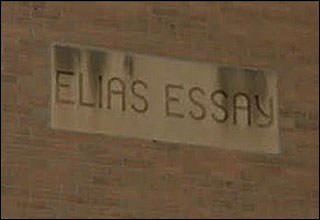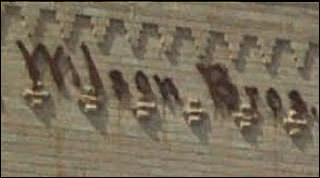

|
 Here we begin our year’s account of the small towns and main streets of America. Lest we not start on such a high note that the rest of the year is a disappointment. Alliance looks like a fine little town. Eighty-five hundred souls. Home to Carhenge.. Let's see what we can see. Here we begin our year’s account of the small towns and main streets of America. Lest we not start on such a high note that the rest of the year is a disappointment. Alliance looks like a fine little town. Eighty-five hundred souls. Home to Carhenge.. Let's see what we can see.
I’d cover up the old sign entirely. It just makes people think you’re a Johnny-come-lately.
Furniture and carpets, says the old faded sign.
Obviously an addition, and I usually suspect the four-window one is the most recent. Times are good, you expand, you go big.
Two buildings - you can see the seam. But not identical.
United by the inevitable Buckaroo Revival overhang. Does anyone ever care how lousy this looks, after all these years?
Modernization-wise, it’s not bad. Really: it’s not as bad as it could be. The awning makes it work.
But the awning came later. The light stone, the blinding up above, the coat of stucco preceded it, I think. Odd sill on the windows; you usually don’t see that. Makes me think that touch must be almost recent. Like, only 20 years ago.
Ah, the past, intact.
Complete with psuedo-Nagel, for all those 80s gals.
OUMB, fever-dream division:
Again, they had to hint at columns, because real banks used to have columns.
Fine old sign:
This is actually quite remarkable. To have survived for this long!
What happened after 1909? This.
Proud, beautiful, empty.
As we like to say: Whoa.
The marquee, as you might have guessed, came later. It contains portions of the original.
The Ben-Grimm style stone is never a friendly addition, but when used like this, you think the owner was expecting the Allies to appear on the horizon and invade.
An attractive - sort of - modern bank. Fifties minimalism always has class, if they spent a buck or two.
I am pro-metal facades, because they remind you that people in the past wanted a new look, and chose something completely modern that literally obscured the past.
A few of these are necessary for understanding any old Main Street.
ADLER and ADLER:
“Make the new one juuuust a little bit bigger. Just a bit. Not so much that people would know right away.”
FRANKLE had a sense of restraint:
I’d say 30s, if I had to. Because it blends in so nicely with . . .
Which came first, the Frankle or the Bauman? The entire block is a collection of local names. This one's interesting:
He was a beverage bottler,. When he died the business passed to his son and wife. It ended up in a lawsuit, which is a sad read.
“Heritages 1 through 5 may have failed, but I’ll be switched if this isn’t the one that makes me my pile.”
The Eagles building attests to the prosperity of Alliance - the fastest growing town in the state, for a while.
We end our visit here:
|
 |
|||||||||||||||||||||||||||||||||||||||||||||||||||||||||||||||||||||||||||||||||||||||||||||||||||||||||||||
|
|||||||||||||||||||||||||||||||||||||||||||||||||||||||||||||||||||||||||||||||||||||||||||||||||||||||||||||||
 |
|||||||||||||||||||||||||||||||||||||||||||||||||||||||||||||||||||||||||||||||||||||||||||||||||||||||||||||||





























